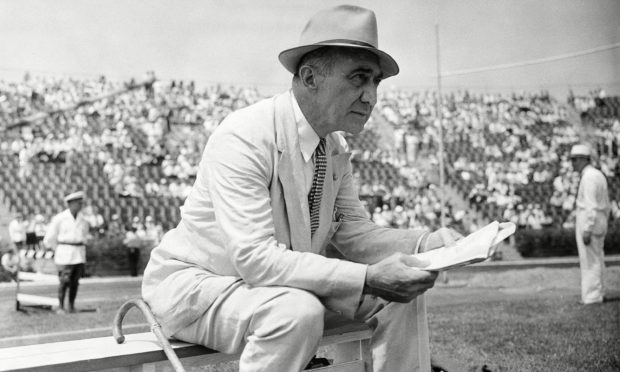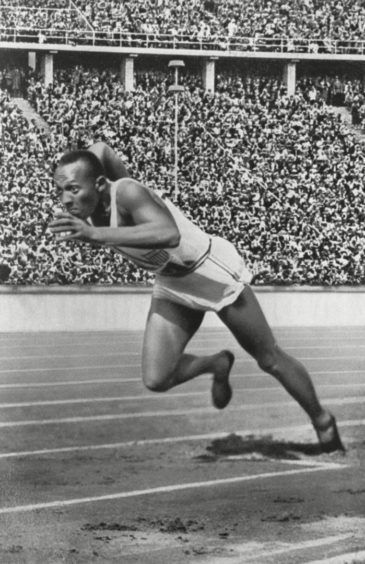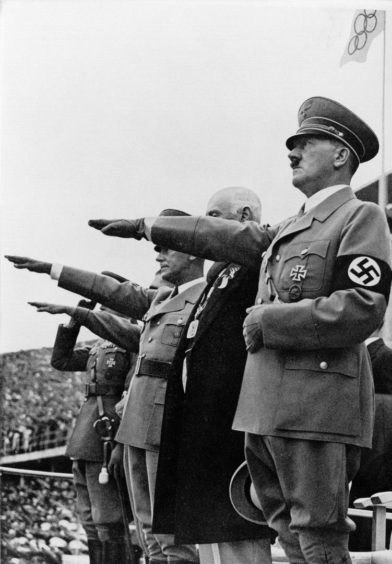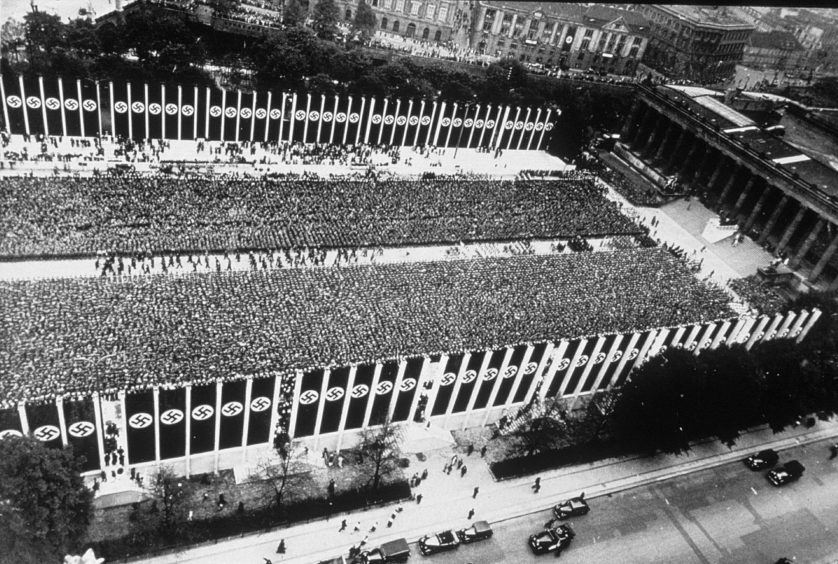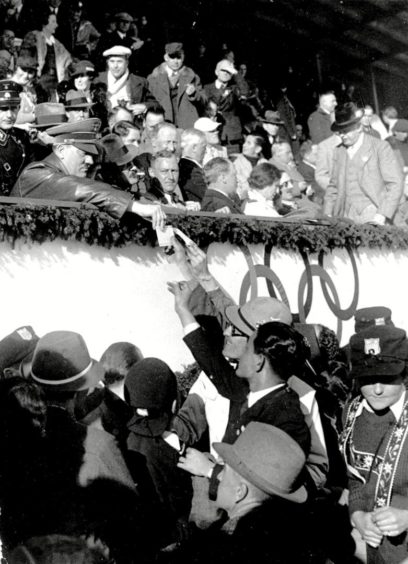Scots have blazed a trail in many different areas, from commerce and the military, to arts, engineering and sport throughout history.
But it is doubtful whether there are many more magical mystery tours than the fashion in which Aberdeen-born Lawson Robertson emigrated to the United States and became one of the leading figures in track and field athletics for the next 50 years.
His back story might tax the little grey cells of Hercule Poirot and the latter part of his career was shrouded by a veil of controversy after Robertson found himself embroiled in a selection scandal at the Berlin Olympics in 1936.
These were the games which often turned into a Nazi propaganda vehicle, but where Jesse Owens transcended the noxious atmosphere with a series of stunning gold-medal-winning performances which silenced Adolf Hitler’s talk of Aryan supremacy.
It was a far cry from the early days when Robertson demonstrated he was one of those fellows with a spring in his stride and a have-passport-will-travel mentality.
There is little information about how he ended up in America, as a young man, after being born in the Granite City in 1883.
Yet, there is no denying the impact which he made in his domain during a distinguished career which encompassed everything from medal feats in the different jumping categories to being commemorated for posterity as a champion in the arcane world of the three-legged race.
The man who was known as Robbie to his friends and colleagues, was a genuine one-off, an athlete who appeared on the inaugural Ripley’s Believe It or Not posters, which have become a part of millions of youngsters’ formative years in the States since 1918.
But, though his origins were in the north-east of Scotland, Robertson had a closer affinity to the many people with Irish ancestry whom he met across the Atlantic.
He was a member of and a trainer for the Irish American Athletic Club, and competed for the US Olympic team at the 1904 Olympics in St Louis, the now little-known 1906 Intercalated Games in Athens, and the more high-profile 1908 Olympics in London.
In the first of these events, on what he regarded as his home soil, he won the bronze medal in the standing high jump competition and was sixth in the 100m race.
Two years later at the Intercalated Games, he secured the silver medal in the standing high jump contest and the bronze medal in the standing long jump.
But he was such a redoubtable all-rounder that there seemed to be no end to his exertions and the chances are that he was tired at the end of every day of competition.
In the 100m event, he finished fifth, he was sixth in the pentathlon and he participated in the 400m.
No wonder sections of the press regarded him as being a one-man team.
In the 100m at the 1908 Olympics, Robertson marked his return to Britain by winning his first-round heat in a time of 11.4 seconds to advance to the semi-finals.
But once he was there, he lost a close race to countryman Nathaniel Cartmell, both runners clocking in at 11.2 seconds and the latter triumphing by just a few inches which eliminated Robertson from advancing to the final.
On the same day as that semi-final loss, he was also knocked out in the preliminary heats of the 200m despite recording a second-place finish in his race.
But he was never bothered or bewildered by these temporary travails.
On the contrary, his attitude to adversity was remarkable, regardless of how often he faced difficulties.
And that was never more obvious than just a year after his trip to Blighty for the Games.
On November 28 1909, Robertson was badly burned in a serious accident at Celtic Park in New York when a ladle of hot lead exploded in his face.
He had been preparing to pour the molten material for a 42-pound receptacle which was to be used in the shot put by Martin Sheridan and John Flanagan at the annual field day of the Second Regiment of the Irish Volunteers.
The shot was discovered as being a few ounces under weight, so a hole was bored into it and the lead was poured inside to bring it to the required mark.
However, Robertson was standing over the ladle when some water dropped into the lead, causing an explosion which burned his face and neck.
It could have been the end of his career – or worse. But that was to underestimate the resilience and resolve of this steely individual.
One newspaper reported: “Fortunately, he had his eyes close tightly, and they were not injured. The flesh about his eyes and face was burned and the lead burned his clothes.”
But, even while he was being rushed to a doctor, the Irish American Athletic Club proceeded with the competition, and Martin Sheridan set a new world record with the very same weight, putting the shot 27ft 0.5in (8.24m), which was three-and-half-inches further than the long-standing record of fellow Irishman James Mitchell.
And amazingly, or perhaps not in the circumstances, who was present later that same evening to applaud Sheridan’s heroics than a determined fellow with a bandaged face?
According to his 1910 trading card, it was considered that Lawson would “go down in athletic history as one of the greatest sprinters of the cinder path”.
In 1912, when Mike Murphy, the coach of the US Olympic track and field team fell ill, Robertson, in his capacity as assistant, took over the reins of the squad, which garnered an impressive haul of 16 out of a possible 32 gold medals.
He also served as assistant coach of the US Olympic team in 1920, and as the head coach for the next four consecutive Games in 1924, 1928, 1932 and 1936.
It was a CV which testified to his exalted reputation within US sporting circles and the media at the time were lavish in their praise for the many different strings to his bow.
One declared: “Lawson Robertson has competed successfully as an athlete for Knickerbocker AC and later for the Irish-American AC and the Thirteenth Regiment.
“He has won national, metropolitan, Canadian and military athletic league championships in the sprints and jumps.
“He and Hary Hillman, who is now coach at Dartmouth University, were the greatest three-legged team that were ever strapped together.
“Their eleven seconds flat for 100 yards will stand for many a day. (And was featured in the first Ripley’s cartoon).
“In addition, as captain of the Irish-American AC for seven years, and under his charge, the Celts won every metropolitan, national and Canadian championship they tried for.”
Robertson later became embroiled in controversy at the 1936 Olympics when he was held responsible for the last-minute decision to withdraw Sam Stoller and Marty Glickman, the only two Jews on the American track team, from their events.
That led to widespread speculation that the US Olympic Committee chairman Avery Brundage had ordered the move to avoid further embarrassment to Hitler and cynically passed the blame on to Robertson who made no public comment on the matter.
Given his track record and involvement in nurturing and encouraging the rise of such outstanding participants as Stoller and Glickman, it’s difficult to imagine Robertson would have willingly sacrificed the efforts of two of his colleagues for political reasons.
But these were strange times and he didn’t have the same clout as Brundage, who was pulling the strings behind the scenes at a stage when America had no interest in offending Hitler or being dragged into talk of European conflicts.
As the leader of America’s Olympic organisation, Brundage had fought zealously against a boycott of the 1936 Olympics, which had been awarded to Germany before the rise of the Nazi regime and its subsequent, escalating persecution of Jews.
He was elected to the IOC in the same year as the Berlin Games, quickly became a major figure in the Olympic movement and was elected IOC president in 1952.
He long outlasted Robertson, who died in Pennsylvania in 1951, at the age of 67.
But the mystery of who did what and where at these notorious Games remains unanswered.
And Robertson’s immense contribution to athletics has largely been forgotten about.
Is it time for a re-evaluation?
